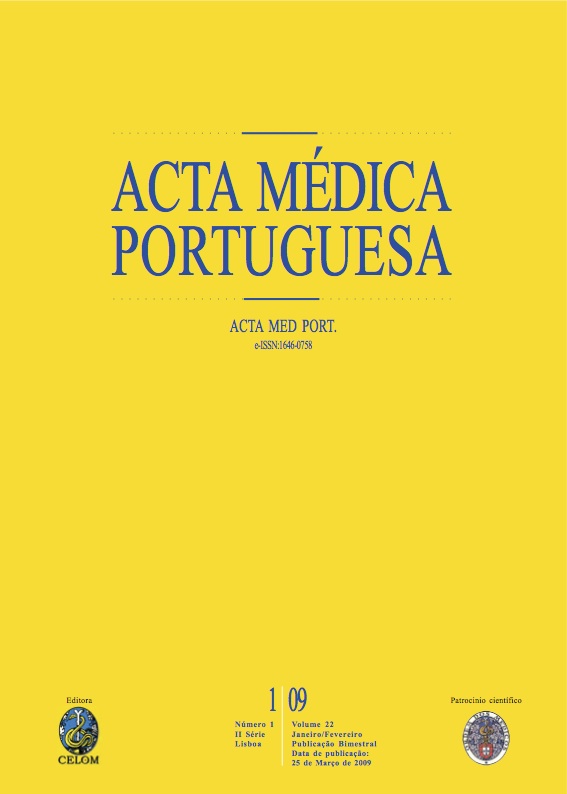Grey platelet disease.
DOI:
https://doi.org/10.20344/amp.1679Abstract
Grey Platelet disease is a rare disease characterized by morphologic changes in platelets alpha-granules. These proteins are essential for the homeostasis, so the patients with this blood defect present hemorrhagic disturbs. The blood discrasia is usually mild, however some patients could present more serious manifestations, usually after a severe trauma. The authors present the following clinical report about a patient that was admitted in a Medical Department with a severe bleeding and mild thrombocytopenia. The patient was submitted to an extensive study to determine the etiology (autoimmunity serology, myelogram, coagulation study) that were all normal. The diagnosis of Idiopathic Thrombocytopenic Purpura was considered. Six months after a worsening of the hemorrhagic discrasia and thrombocytopenia the patient was assisted. Corticotherapy was initiated without improvement. The morphology of the platelets was revised and the blood smear with Wright coloration revealed the presence of large, pale and grey platelets. The electronic microscopy confirmed the diagnosis of Grey Platelet disease. The family of the patient was studied and we found that two direct relatives were affected with the same disease. In these family these syndrome probably has autossomic dominant inherence.Downloads
Downloads
How to Cite
Issue
Section
License
All the articles published in the AMP are open access and comply with the requirements of funding agencies or academic institutions. The AMP is governed by the terms of the Creative Commons ‘Attribution – Non-Commercial Use - (CC-BY-NC)’ license, regarding the use by third parties.
It is the author’s responsibility to obtain approval for the reproduction of figures, tables, etc. from other publications.
Upon acceptance of an article for publication, the authors will be asked to complete the ICMJE “Copyright Liability and Copyright Sharing Statement “(http://www.actamedicaportuguesa.com/info/AMP-NormasPublicacao.pdf) and the “Declaration of Potential Conflicts of Interest” (http:// www.icmje.org/conflicts-of-interest). An e-mail will be sent to the corresponding author to acknowledge receipt of the manuscript.
After publication, the authors are authorised to make their articles available in repositories of their institutions of origin, as long as they always mention where they were published and according to the Creative Commons license.









